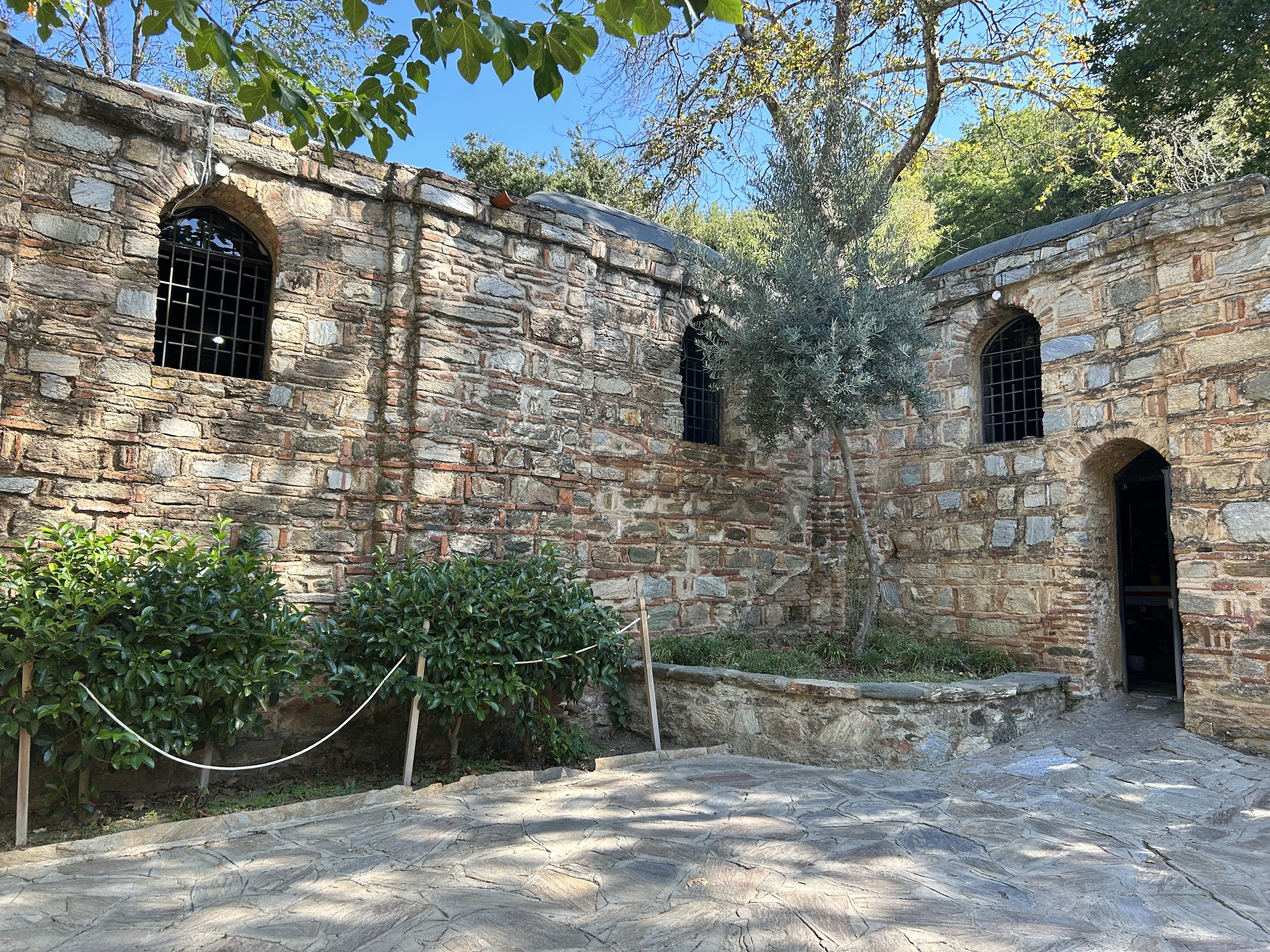Vacation Part 8- Artemis and Mary
Day 8 was spent taking a vacation from vacation. There is nothing quite so relaxing as an empty horizon.
Across the sea and over the hill to Ephesus we go.
How does a traveler know for sure they’ve landed in Turkey? They have a flag for that.
The sea day on the ship was just what we needed, and when we arrived in Cesme, Turkey on day 9, we were ready to see more ruins and walk the streets of the ancient city of Ephesus. The city was built on a natural harbor some time before 700 BC. Centered on a temple to the Greek goddess Artemis, the Ephesians couldn’t get enough of building larger and larger temples. The last being so big it is considered one of the “Seven Wonders of the Ancient World.” The Greeks lost control of the city to the Persians from 546 BC until 334 BC, when Alexander the Great kicked them out. It was at this point that the city was relocated further from the bug infested coastal marshes and a new harbor was built. After 263 BC, the city changed hands between the Egyptians, Seleucids, and Pergamon until the Romans took over in 129 BC. Under Caesar Agustus, the city increased in importance and prosperity. In 43 BC, a trading district was opened and the city was second only to Rome in culture and commerce. It was in this environment that Saints Paul and John began preaching the new Christian faith around 56 AD. Fast forward to 262 AD when the Goths ravaged the city, starting its slow stumble to obscurity. As the Roman Empire faltered, the harbor silted in, leaving the city mostly useless. The temple to Artemis was dismantled to build Christian churches elsewhere and a few centuries later, the city was abandoned.
In ancient times, ships could make their way into the sheltered harbor. Today the waterway is marshland and the city is almost three miles from the the ocean.
Our tour started at high point of the city in the “State Agora.” It is currently used as a storage lot for collected stones and clay pipe.
From the level of the Agora, the stone paved main street of the city heads down towards the old port. Most of the street has been excavated, but archeologists believe the unearthed portion of city extends well back on both sides. The flat land in the distance was water in ancient times.
Imagine this as the sidewalk in your town. The modern structures cover on-going excavations.
The Public Bath could seat all your friends.
The Celsus Library was built around 110 AD and destroyed by an earthquake in 270 AD.
The Great Theater. The stones in the foreground are part of the Theater Gymnasium.
Ephesus is almost overwhelming and deserves more than a few hours to visit. Add into this mix, up on the side of Mt. Koressos, back in a peaceful hollow, there is a shrine called Meryem Ana Evi that will make your record needle skip a groove.
Somehow, in the modern catechesis, what might have happened to Mary at the end of Jesus’ story isn’t known, so, low and behold, here are the details of the “Happily ever after.” Saint John brought Mary out of the Holy Land and up to the city of Ephesus. While John was spreading the Good News, she resided in a little house with a natural spring and surrounded by shady trees. Mary lived the quiet life, receiving visitors and disciples as they passed on their journeys, until she passed away.
Located on the site is an excavated cistern, a reconstruction of the house, built on the original foundations, and cool spring water flowing from the hillside. It is worth more reading. Pope Leo XIII formally recognized the location as an official pilgrimage, and Pope Pius X granted a plenary indulgence to pilgrims.
The current building standing on the location of the house Saint John built for Saint Mary.
The excavated cistern.
Travelers taking in the spring water for its refreshing and healing properties.












